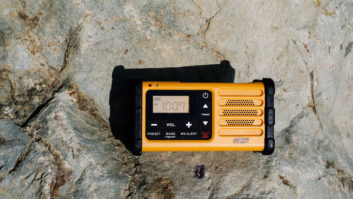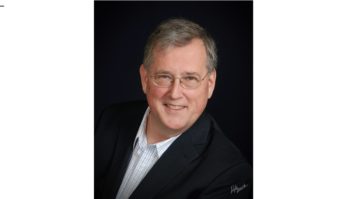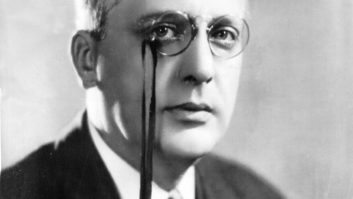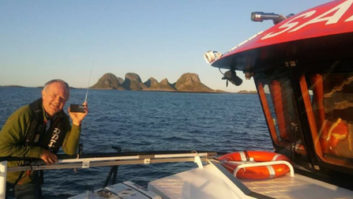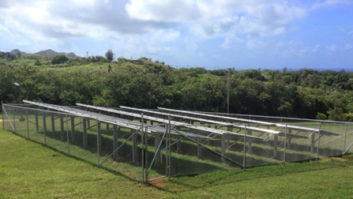The World’s Largest Battery
Dec 1, 2001 12:00 PM
KLIF in Dallas is generally considered the birthplace of Top 40 radio, and Gordon McLendon is considered its daddy. On the air since November 1947, McLendon took a brave step in 1954 when he changed radio forever by instituting a 40-song playlist and took the station from a 2% share to a 45% share almost overnight.
The station was 5kW non-directional during the day, but had a 1kW directional authority at night. The signal had long been unsatisfactory to McLendon. It was obvious to him that both Dallas and Fort Worth deserved to hear his station, even at night, so by 1969 he was determined to get a power increase from 1kW to 5kW at night, no matter what. The idea was to sacrifice nighttime coverage in less populated areas in favor of improved coverage of the entire metroplex.
What he ended up with was a 12-tower array about 25 miles east of Dallas in Rockwall, TX, and a nighttime pattern that has been described as looking like a �Zeppelin with fish tails.� Along with the 12 towers is a phaser that occupies five 42-inch wide cabinets. The man charged with installing this was Dave Hultsman, now domestic broadcast channel manager for Continental Electronics.
The 12 towers were arranged in two rows of six. The array was about a half mile long, and the rows of towers sat 200 feet apart.
With the towers up and the tower crew anxious to put in the ground system, Hultsman was under pressure to get the doghouse power, transmission lines and sampling lines buried. But not all of the sample line had arrived. The lines were 1,347 feet long and consisted of ?-inch unjacketed CATV cable, phase stabilized. They had been ordered to be all the same length to make the already difficult task of phasing a 12-tower array as easy as possible. This meant that a lot of extra line for the towers nearest the transmitter building would have to be coiled underground.
Knowing that if he dug all the trenches and laid the power and transmission lines, the trenches would probably fill before the rest of the sample lines arrived, Hultsman was hoping to wait as long as possible to get started. But finally he gave in to the pressure and buried all he had, including three of the sampling lines. There were no doghouses yet, so the lines stuck out of the ground near each tower.
By the time the next shipment of sampling lines arrived, the trenches had caved in, so they had to be dug out by hand. As each trench was cleared, three sampling lines were buried. This continued until all the lines were buried.
Glenn Callison, McLendon’s VP of engineering and Hultsman’s boss, was in town to check the progress of the site. He grabbed an ohmmeter and put it on one of the sampling lines. It read a dead short. Callison was on a tight travel schedule and wasn’t able to troubleshoot the line, so he gave Hultsman the responsibility of figuring out what was wrong.
�I had a lot on my plate and had hoped that Callison would deal with the sampling line issue, but the problem was given to me anyway.� When Hultsman checked his first line, he didn’t read a short. Instead, his meter slammed into the left peg. Knowing he had not discovered negative resistance, he measured for voltage and found a 0.3V potential between the center conductor and the outer shield.
Hultsman recalls, �I checked all the lines and found problems with most of them. I still held out some hope that Callison would deal with this as I was having problems with the power company. I finally got tired of being chewed out about not having it solved, so I got some rags and a tube cutter and headed out to tower 4. The soil was still a little loose so it wasn’t too hard to dig up the line by hand. They were buried about 48 inches deep.
�When I got to the line, I could tell it didn’t look right. So I kept digging until I had about a two-foot section completely exposed.�
Hultsman then began trying to clean the muddy lines using the rags until finally he saw what had happened. �It looked like the entire line had been eaten up with some kind of acid. It turns out that the dissimilar metals of aluminum and copper, separated by the foam had undergone a chemical reaction with the wet soil, which is very acidic in North Texas, and created what one of my coworkers dubbed �the world’s most expensive battery� � 12 cells and a grand total of about 3.6 volts if we could have hooked them all in series.�
Hultsman is quick to point out that he didn’t specify the unjacketed line that created the 164-acre battery. �There were four bidders and the one we went with was the only bidder that quoted unjacketed line. Callison and I both missed it.
�When I tell this story, I always write it off to being a young and inexperienced engineer,� says Hultsman. He doesn’t tell the story often.
The Dallas station on 1190 is now KTRA, carrying Fox Sports programming. It has changed hands several times since the Gordon McLendon days, and it is now owned by Clear Channel.
During construction, the site was once mistaken for the Rockwall Airport runway and a disaster was narrowly averted when Hultsman, Rick Neace and several other engineers waved off a landing at the last minute.
The 164 acres used for the site are part of McLendon Ranch. It is a hilly site; some of the towers sit at ground level, some are in pits and others are on little hillocks. As you drive by the site at night on I-30, you can hear the station clearly all the way to Fort Worth. But if you travel very far to the north or south, it seems to go away as if turned off by a switch.





